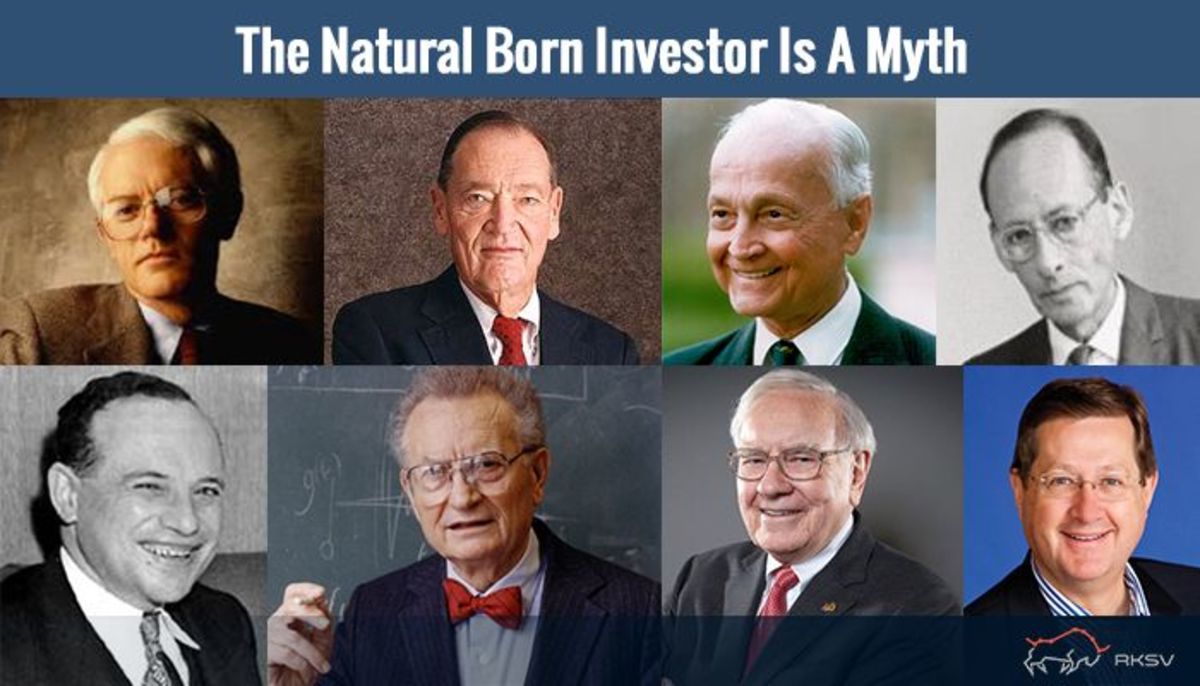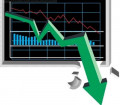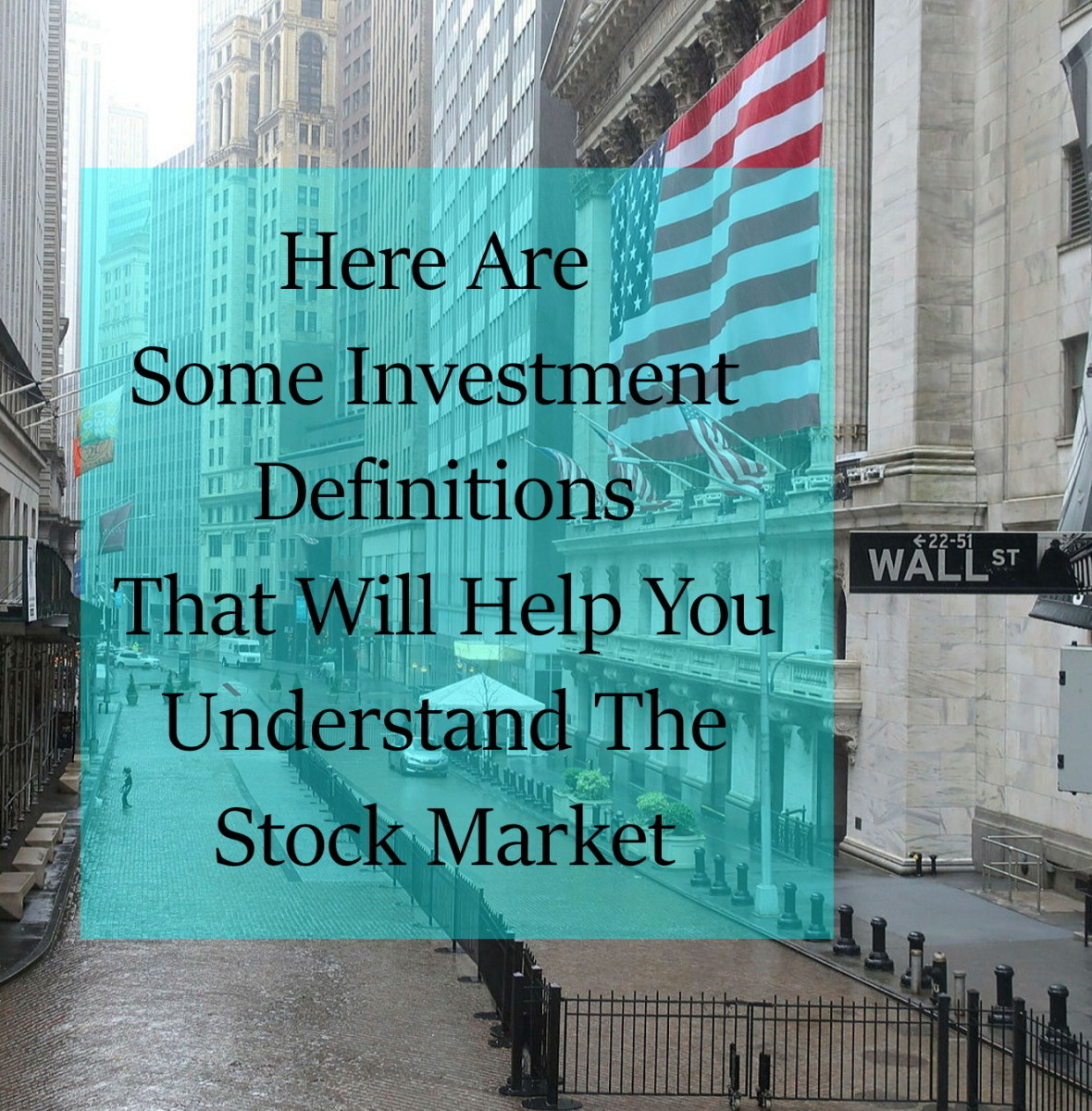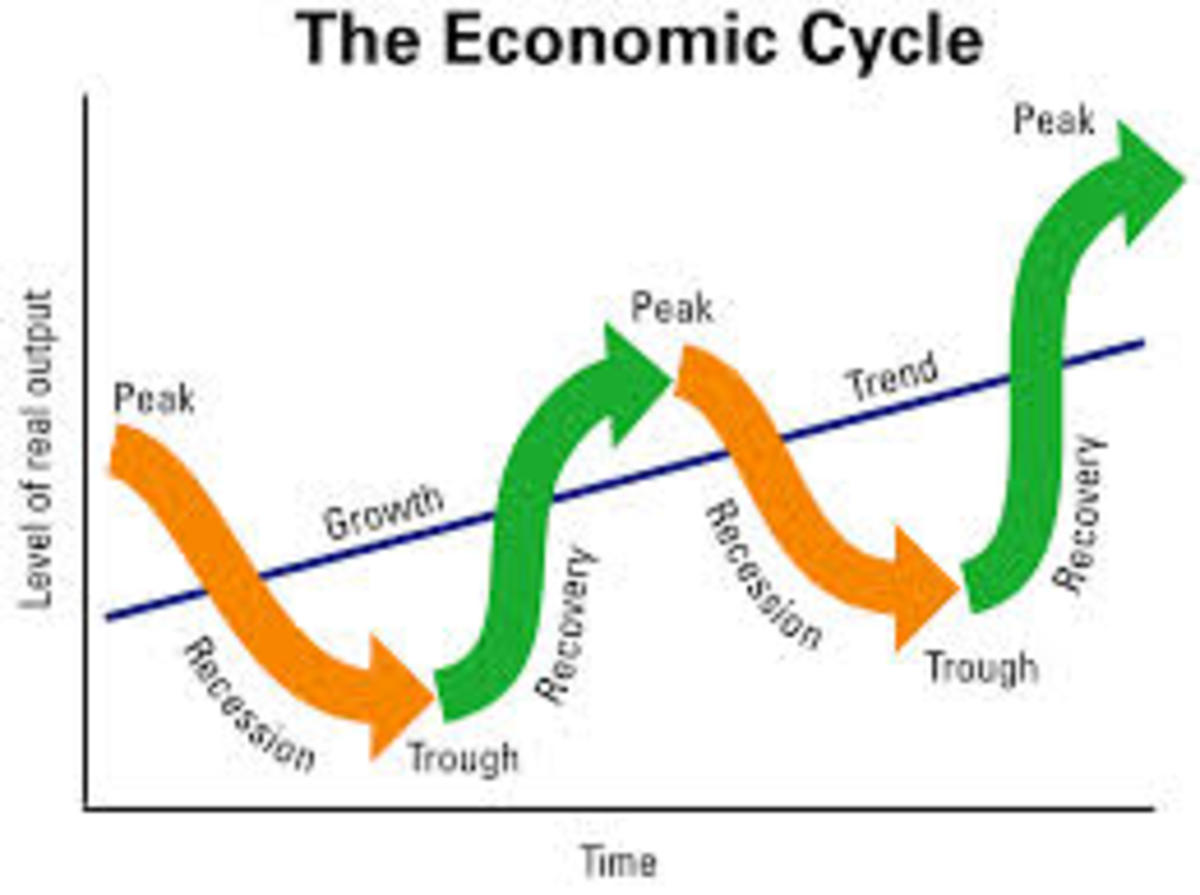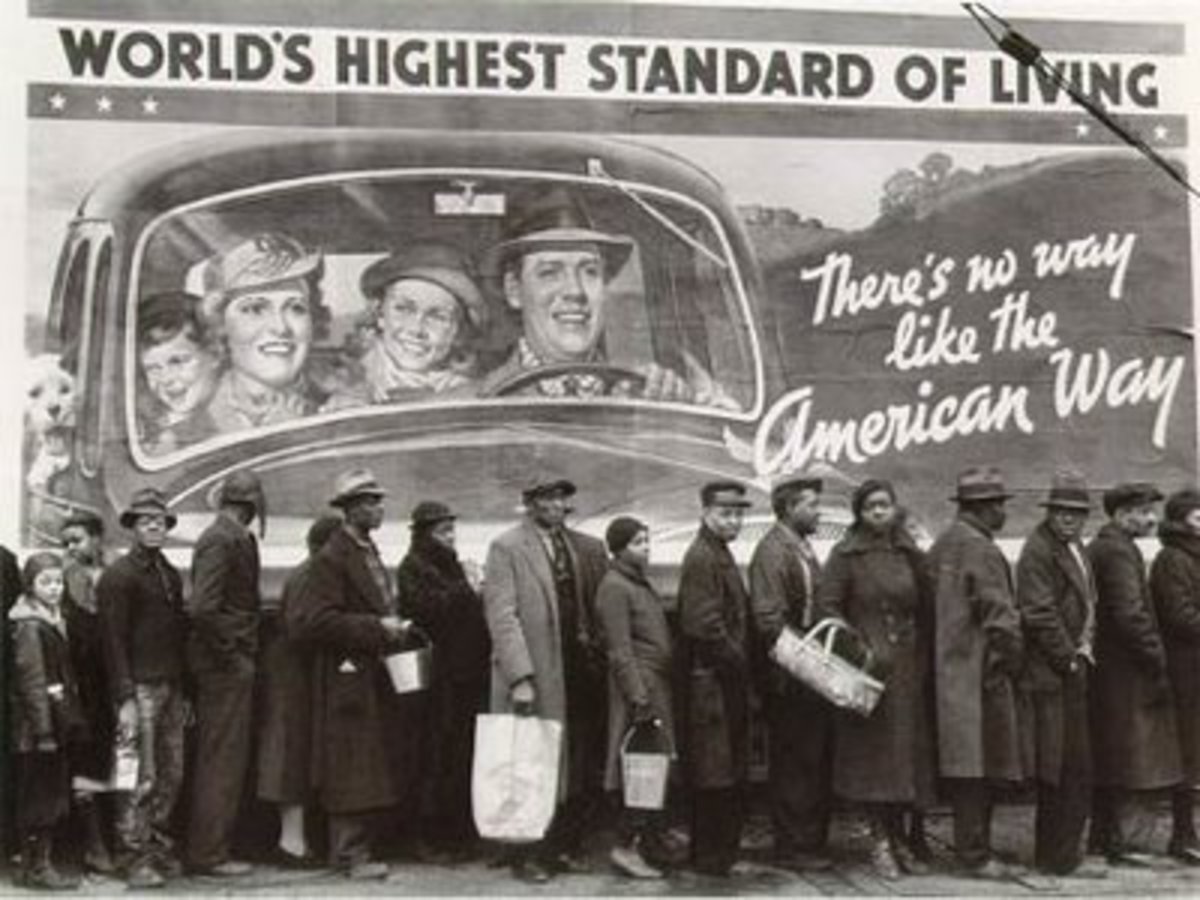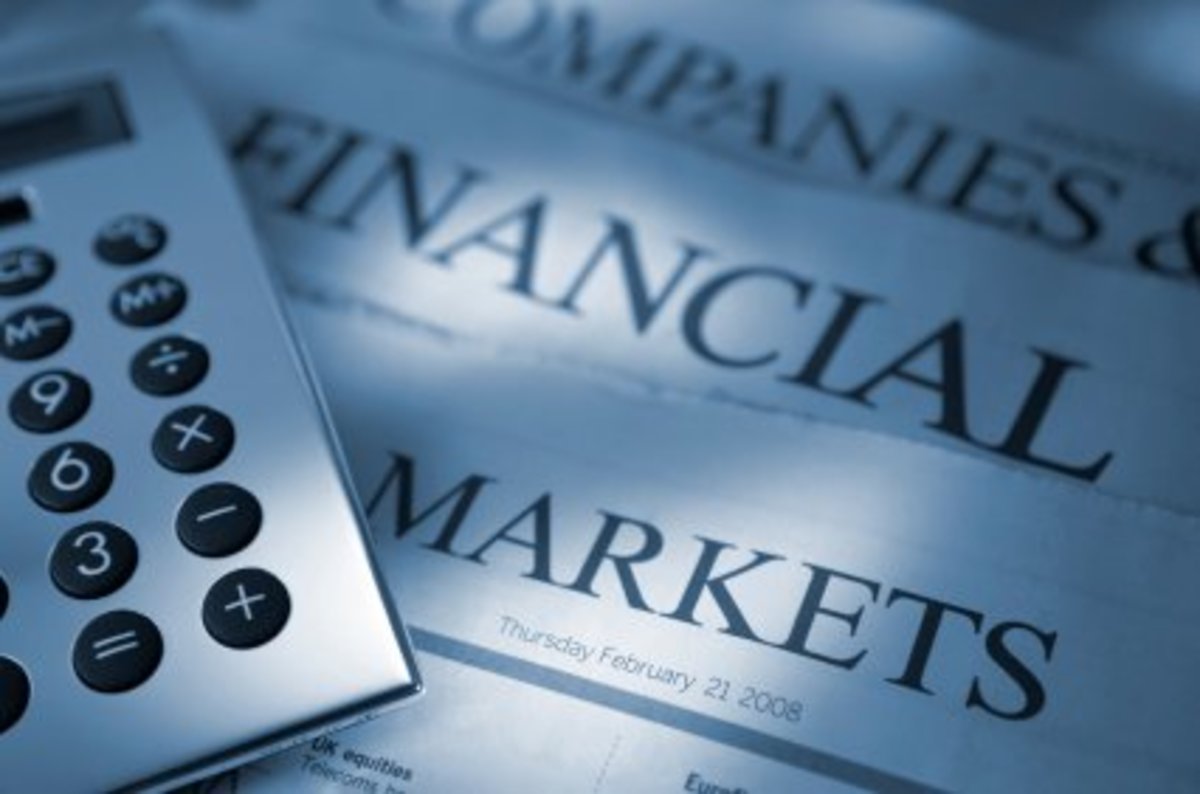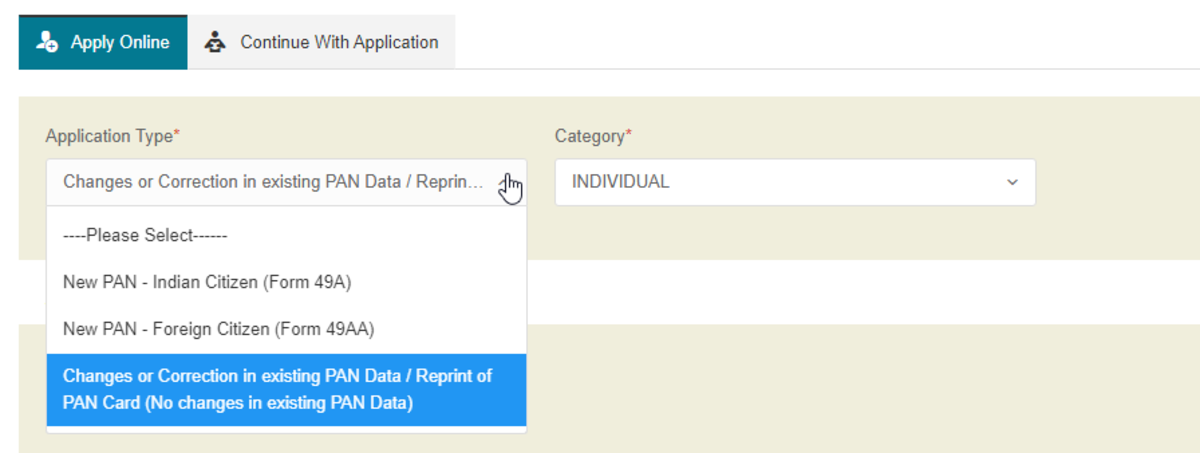The effects of a Stock Market Crash
The Effects of the Stock Market Crash
*** Exciting update 4th November 2010 ***
Please read to the end of this article for an exciting update.
What was the impact of the stock market crash of 1929 on the individual? Firstly, consider the mood of the twenties. The world had survived the 1914-18 war, known as the Great War, and widely thought to be the war to end all wars. Now, with hindsight, we simply call it the World War I.The “Roaring Twenties” featured industrialization and new technologies that promised a bright future. Automobiles were becoming more common, and air flight was in its infancy, but was another presage of a prosperous new world. Unemployment was low, and production high, which meant that most companies were booming, and stocks and shares were soaring. Between 1924 and 1929 the New York Stock Market quadrupled in value. Even the shoeshine boys would give you hot tips.
Economists of the day regarded stocks as extremely safe, because of the economic boom. Many investors bought stocks “on margin”, basically borrowing money from their broker to leverage their investment. This was the smart thing to do, as it multiplied the income you received from your investment. Some went as far as mortgaging their homes to raise more money for investment. It was so obvious that it was a sure thing, most people didn’t even check the fundamentals of the companies they were putting their money in. In fact, thousands of fraudulent companies were formed for the purpose of taking money from naïve investors.
There were some signs of a slowdown, but many people did not see or heed them. In England, John Maynard Keynes, one of the world’s leading economists, was caught unawares and lost heavily in the crash. Irving Fisher, a leading U.S. economist, lost everything, including his house. Those people who warned the public about the overheating of the economy, such as the President of the American Bankers Association, reported in the Financial Times on October 7, 1929, were generally ignored.
There were a few days when stocks declined before the fateful days which are identified as the stock market crash, “Black Thursday” (October the 24th) and “Black Tuesday” (October the 29th), but it still came as a shock and surprise to most investors that the Dow declined 23% on these two days alone. In three days, the New York Stock Exchange lost over $5 billion in share value. This only provided a kick start to the Great Depression, which continued through the thirties, the market bottoming out in 1932 having lost 89% of its value.
Of course, this meant that people felt, and indeed were, poor, even if they had no exposure to company financials, and this decimated the demand for goods and fueled the company losses. However, many people were affected more directly, even without having invested, because the banks of the day had put so much of the deposits in the stock market. This meant that they had no money to pay back depositors. They were left with almost worthless stock certificates and uncollectible loans, and hundreds of banks failed leaving their depositors with nothing.
The panic selling which characterizes a stock market crash and the torment suffered by those people broken by the event was evidenced by the number of suicides. Winston Churchill was visiting New York less than a week after the crash, and noted in his diary “Under my window a gentleman cast himself down fifteen stories and was dashed to pieces”. This was not unusual, many bankrupt speculators committed suicide by jumping out of buildings. In fact, in downtown hotels it is rumored that the clerks were asking the guests whether they wanted the room for sleeping or jumping! The head of Rochester Gas & Electric Company gassed himself, and another investor doused himself in gasoline and set it alight. In all, 23,000 Americans committed suicide in the following year.
As a result of the Stock market crash and the following depression, 20,000 companies went bankrupt. 12,000 people were made redundant every day. A total of 12 million people became unemployed, and 1616 banks, which were not, as today, insured by the FDIC, went bankrupt.
It is said that the poverty which spread across the world, resulting from the stock market crash and its consequences, aided the rise of the Nazis. Indeed, the economy only finally recovered with the production required for the Second World War.
These are the effects at a personal level of a stock market crash. Interestingly, Bear Stearns, the investment bank, which has just succumbed to the current crisis in the financial markets, survived through the 1929 stock market crash.
Would you like to learn how to profit from any market situation, whether the markets go or down? We are delighted to now provide all readers with complete, full 100% training, at absolutely no cost to you whatsoever. This is the first that you can now receive professional trader training, no risk, no fee, no payment, no charge ever. Learn more about our 100% no nonsense, no catch training at http://www.insightsupport.com

